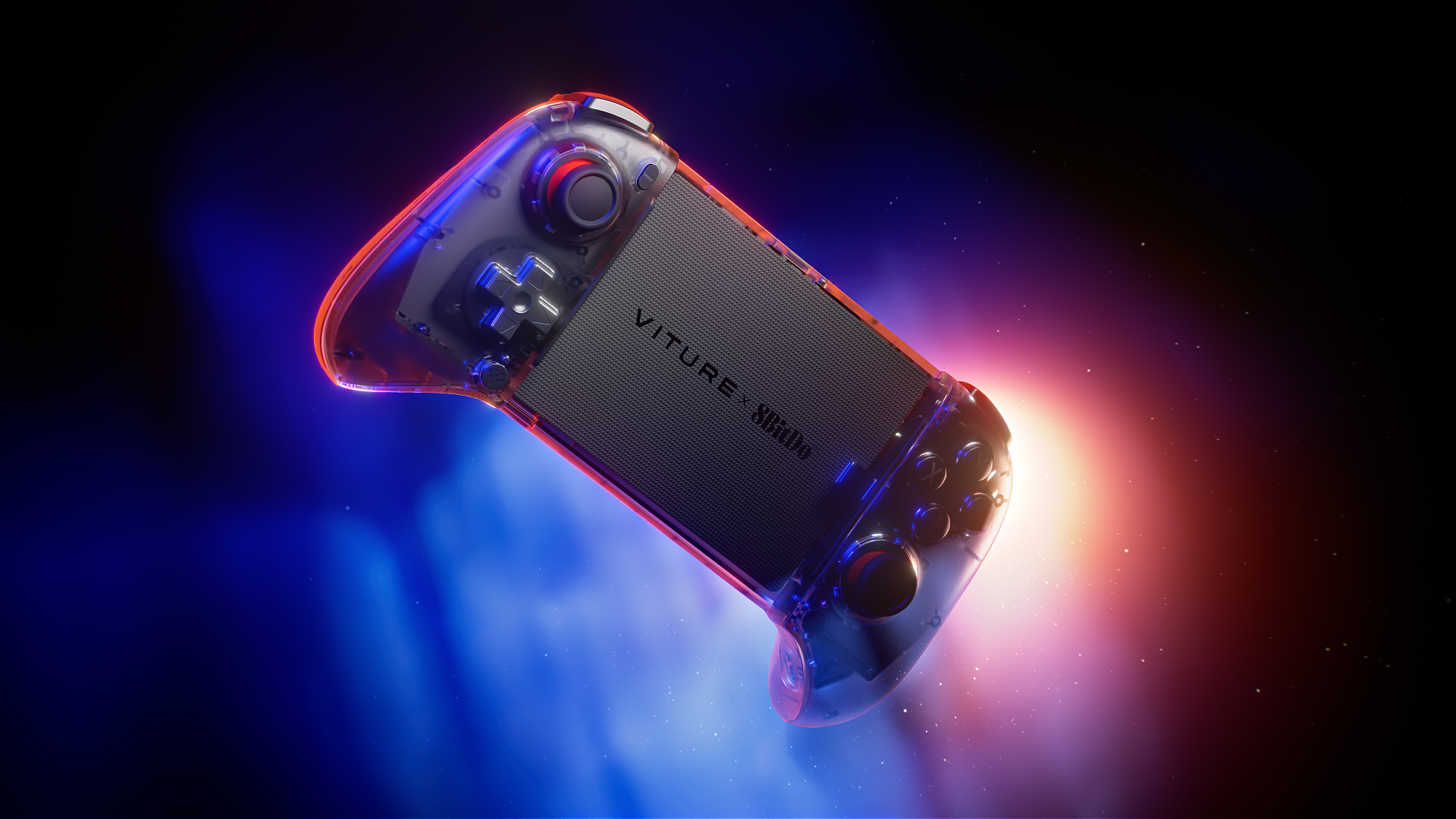Laptop Mag Verdict
The HP Omen 15 is a good-looking gaming notebook with a vibrant display and powerful sound for immersive play sessions.
Pros
- +
Good looks
- +
Bright, colorful display
- +
Booming sound
Cons
- -
Short battery life
- -
Plastic instead of aluminum lid
Why you can trust Laptop Mag
HP's Omen 15 is more desirable than ever. The gaming notebook ($950 to start; $1,659 as tested) has been redesigned with an eye-catching chassis; a clicky, responsive keyboard; and an easy-to-remove panel to upgrade the hard-disk drive, solid-state drive and RAM. Add in a bright, vibrant display and some nice, loud speakers, and you have a gaming notebook that will enthrall you. The only downsides are the short battery life and a few plasticky areas of the chassis.
Design
While HP couldn't escape the black-and-red aesthetic we find on most gaming laptops, the new Omen is as good as this color scheme can possibly look. I just wish it used more premium materials. The lid is black, with four red lines forming an "X." That X divides the lid into quadrants: two covered in carbon fiber and two in plastic made to look like brushed aluminum. The carbon fiber looks and feels premium and unexpected. The plastic? Not so much. The top quadrant features the Omen logo in an attractive, shiny red, though the foil was starting to peel off when we took our review unit out of the box.
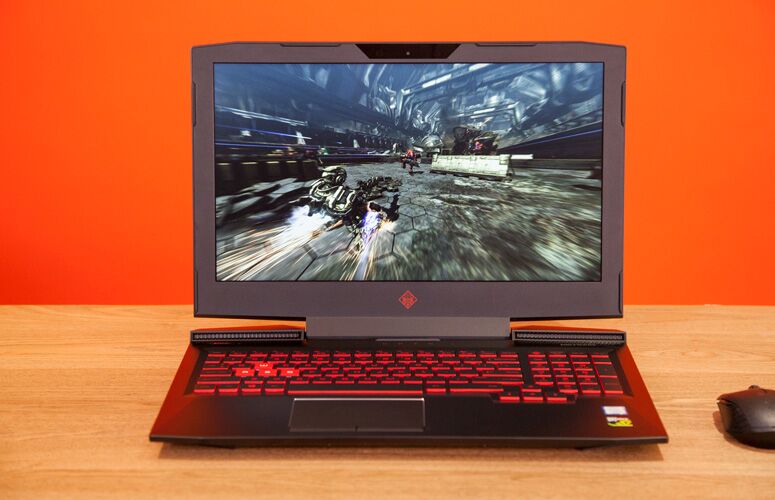
When you lift the lid, you'll find the 15.6-inch 4K display, surrounded by a thick bezel with the Omen logo. (The word "Omen" is spelled out again on the deck.) There's a full island-style keyboard with a number pad. The WASD keys are in bright red, while the rest are black with red sides and letters.
Unlike the lid, the deck is made of aluminum, and it feels strong and durable. The bottom, though, returns to plastic. I don't usually focus on what the bottom looks like, but the undercasing features yet another Omen logo, textured plastic and some triangular patterned vents. Removing a small port on the bottom gives you easy access to the hard drive and RAM for simple upgrades.
MORE: Here Are the Best PC Game Controllers
The Omen is an inch thick and 5.7 pounds, which is a bit heavier than most competing notebooks, but also a little thinner. The Acer Predator Helios 300 is a lighter 5.5 pounds but it is 1.5 inches thick; the Dell Inspiron 15 7000 Gaming is heavier, at 5.8 pounds, but it is also 1 inch thick; and the Razer Blade is the smallest all-around, at 4.2 pounds and 0.7 inches thick.
The Omen includes almost every port a gamer could want. On the left side of the machine are a Kensington Lock slot, a Mini DisplayPort, HDMI output, an Ethernet jack, a USB 3.0 port, a Thunderbolt 3 portand headset and mic jacks. The right side of the notebook sports an SD card slot and another pair of USB 3.0 ports.
Display
The 15.6-inch, 4K display is quite bright and offers up vibrant hues. When I watched the 4K movie Tears of Steel, a lab's holograms were vibrant shades of pink and neon green, and I could see some gray hairs in one character's otherwise dark beard. The panel also served me well while gaming. While I played Battlefield 1, the bright-blue skies shined over my warplane, and I could see all of the sharp, jagged rocks on the mountains I was flying around.
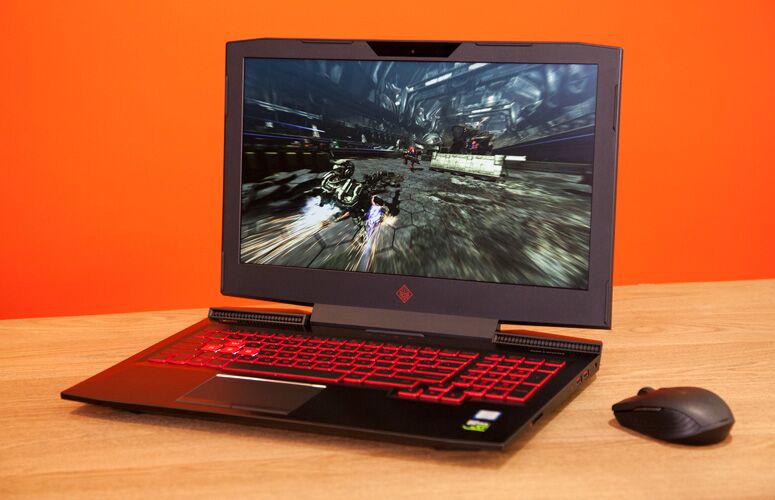
The Omen's screen covers an excellent 114 percent of the sRGB color gamut, surpassing the mainstream notebook average (100 percent), tying the Razer Blade, and beating both the Predator (81 percent) and the Inspiron (67 percent).
At 313 nits of brightness, the Omen was more luminous than the competition. The mainstream average is 255 nits, and the Razer Blade was just a hair dimmer than the Omen, at 310 nits. The Inspiron (226 nits) and the Predator (253 nits) have noticeably darker displays.
Keyboard and Touchpad
HP designed a new keyboard for the Omen, and it's a fascinating beast. It offers low travel -- just 1.2 millimeters -- and requires 70 grams of actuation to press, but the keys are extremely clicky and responsive. This makes for a keyboard that will take some getting used to for regular typing, but is great for gaming. . On the 10fastfingers.com typing test, I reached 105 words per minute, just shy of my usual 107 wpm, but I maintained my usual 2 percent error rate.
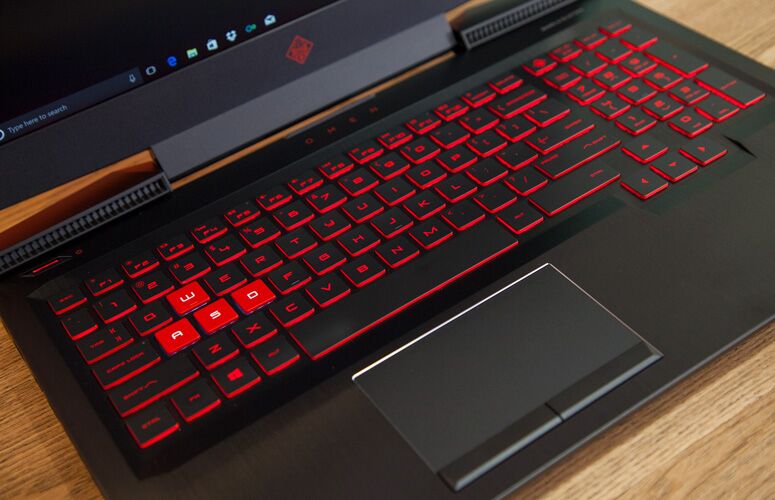
The Omen's keys are backlit with red lighting, with the exception of the WASD keys, which are white. I wish HP allowed for customizable sRGB backlighting in any color you'd like.
MORE: How to Stream to Twitch
The 4 x 2.2-inch touchpad is a little on the small side, but I had no issues browsing the web or navigating Windows 10 with it. It's great with gestures like pinching to zoom and tapping three fingers to open up Cortana. The mouse buttons are a little small for my liking, but in practice, I didn't have any problem using them.
Audio
The speakers on the Omen 15 are nice and loud, filling our lab when I listened to Yellowcard's "Lights and Sounds." The vocals were clear, though they slightly overpowered the drums and guitars; the bass was almost nonexistent. With the Omen Audio Control app, I adjusted the bass, treble and vocal clarity for more balanced sound, though I only ever got a hint of the bass.
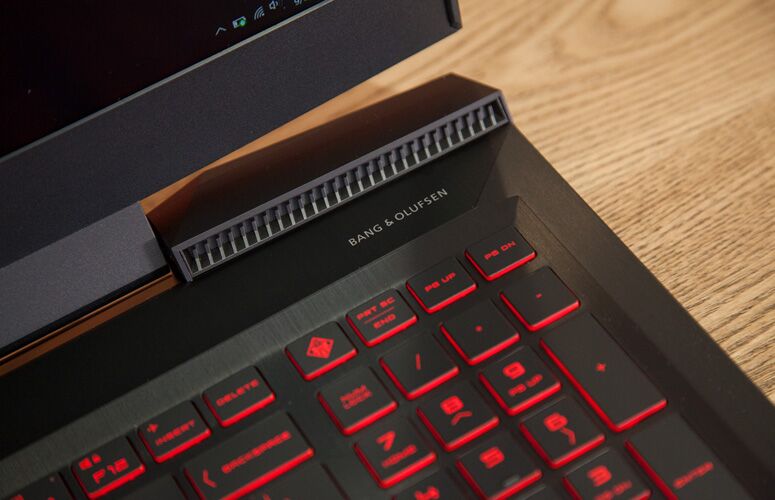
The Omen sounded great when I played Battlefield 1. Bullets rang out loudly, and the orchestral background music filled our lab. My co-pilot's frantic yelling was clear as I whipped over the mountains and dodged enemy fire.
Gaming, Graphics and VR
The Omen 15's Nvidia GeForce GTX 1060 with Max-Q design and 6GB of VRAM won't power games to take advantage of the 4K display, but they're more than enough to play games at smooth frame rates in 1080p resolution. When I played Battlefield 1, I shot down enemy planes over French mountains at between 57 and 60 fps, using 1080p resolution and ultra settings. (The game caps the frame rate at 60 fps.) At 4K, I had to go down to medium settings, and even then, it sometimes fell below 30 fps (it ranged from 27 to 32 fps).
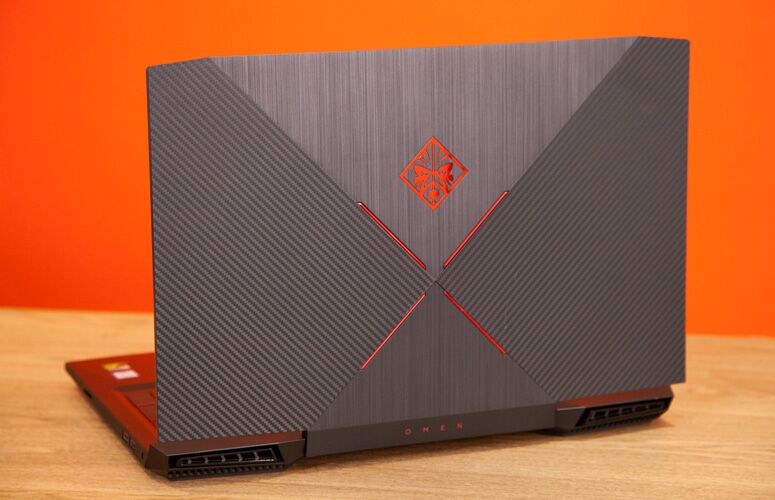
HP's laptop played Rise of the Tomb Raider (1080p, very high settings) at 32 fps, just below the mainstream average (35 fps) and less than the Predator Helios (67 fps, GTX 1060) and the Blade (43 fps, GTX 1060). It was below our playability threshold of 30 fps on the Inspiron (22 fps, GTX 1050 Ti).
When it came to stealthily snapping some necks in the Hitman benchmark (1080p, ultra settings), the Omen rendered the game at 66 fps, outperforming the average (57 fps), the Predator (64 fps), the Blade (60 fps) and the Inspiron (35 fps).
MORE: The Best Gaming Laptops
On the very intensive Metro: Last Light benchmark (1080p, high settings), the Omen reached 41 fps, which is above the average (39 fps) and the Inspiron (29 fps). However, the Blade (43 fps) and the Predator (46 fps) each eked out a few more frames.
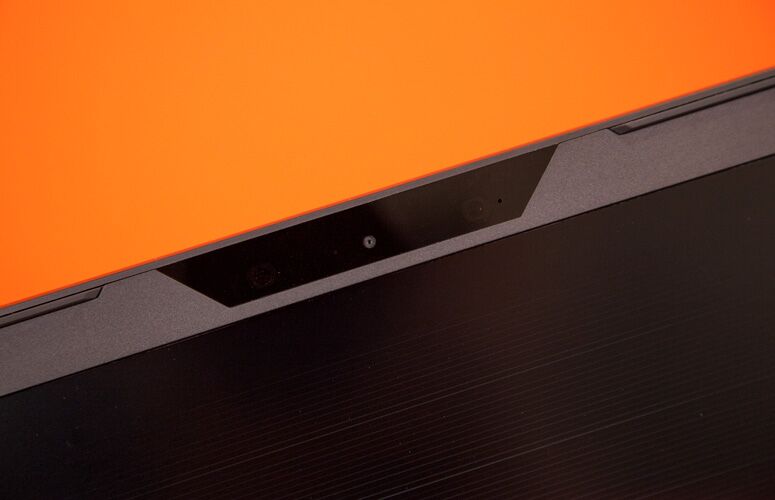
VR is iffy with the Omen. The HP machine earned a score of 5.7 on the StreamVR performance test, which is below the average (5.8) as well as the scores from the Predator (7.1) and the Blade (6). VR will work on the Omen, but not as well as it will on PCs with a full-size GTX 1060 or more powerful cards. Think twice before making this the main PC for your Rift or Vive.
Performance
HP stuffed our review configuration of the Omen 15 with a 2.8-GHz Intel Core i7-7700HQ CPU; 16GB of RAM; a 1TB, 5,400-rpm HDD; and a 256GB SSD. That's plenty of power for everyday computing. Case in point: I had 30 tabs open in Chrome, including one streaming a 1080p episode of Last Week Tonight, and downloaded a game from Origin.
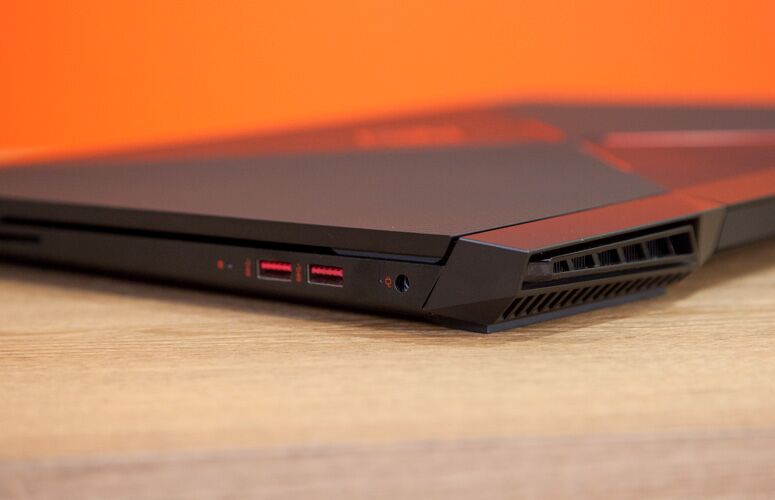
The Omen 15 notched a score of 12,528 on the Geekbench 4 overall performance test, beating the mainstream average (10,543) and Inspiron 15 7000 (10,363; Core i5-7300HQ) but falling short of the Predator (13,587; Core i7-7700HQ) and the Blade (13,684; Core i7-7700HQ).
It took the Omen 27 seconds to copy 4.97GB of mixed media files, translating to a rate of 188.5 MBps. The mainstream average is a faster 237 MBps, and the Blade (203 MBps) is also speedier. The Predator transferred files at the same speed as the Omen, and the Inspiron was the slowest (106 MBps) of the bunch.
MORE: The Best Headsets for Immersive Gaming
On the OpenOffice Spreadsheet benchmark, the Omen paired 20,000 names and addresses in 3 minutes and 21 seconds, making it the fastest in the field. The average is 4:27, the Predator was just behind the Omen (3:22), and the Razer and Inspiron took 3:31 and 3:37, respectively.
Battery Life
The Omen 15 will have to be plugged in almost all of the time, especially while you're gaming. It lasted just 3 hours and 18 minutes on the Laptop Mag Battery Test, which continuously browses the web over Wi-Fi. That's just a little over half of the mainstream average (6:20), while the Predator endured for 6:48, the Blade survived for 7:45 and the Inspiron kept running for a whopping 11:14.
Heat
During regular use, the Omen stayed nice and cool. After we streamed 15 minutes of HD video from YouTube, it measured 93 degrees on the bottom, 91 degrees on the touchpad and 80 degrees at the center of the keyboard. All of those are below our 95-degree comfort threshold.
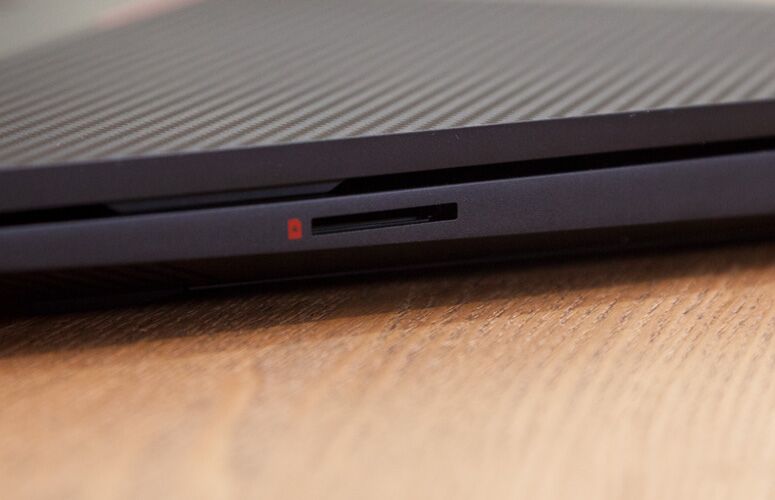
Unsurprisingly, the Omen heated up when I played Battlefield 1, reaching 107 degrees on the bottom, 100 degrees between the G and H keys, and 81 degrees on the touchpad.
Webcam
The 1080p webcam on the Omen is far brighter than most embedded laptop cameras, and colors appear extremely accurate.

When I took a few shots at my desk, my bright-red shirt was the same color on-screen as it was in real life. Unfortunately, most of the shots I took were grainy and fuzzy.
Software and Warranty
HP really packed the Omen 15 with software, to the point where some of it feels unnecessary. Besides specialized gaming software, it also features almost all of the programs you can find on a consumer-focused HP laptop. The big gaming app is Omen Command Center, which details GPU and CPU utilization and RAM usage, as well as a feature called Network Booster that lets you prioritize which apps get bandwidth priority.
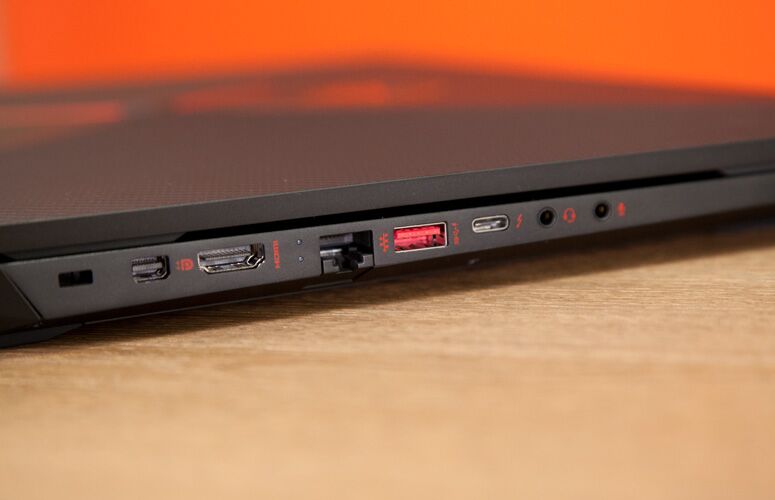
HP's other software includes JumpStart (a series of how-to guides and articles) and HP Orbit, which lets you transfer files between your PC and smartphone.
Additionally, you get all of the usual bloat that comes preinstalled with Windows 10, including Twitter, Keeper, Hidden City: Mystery of Shadows, March of Empires: War of Lords, Drawboard PDF, Netflix and Minecraft: Windows 10 Edition.
HP sells the Omen 15 with a one-year warranty. See how HP performed on our Tech Support Showdown and Best and Worst Gaming Laptop Brands ranking.
Configurations
HP sells the Omen 15 in a variety of prices and configurations. The model we reviewed costs $1,659 and has a 2.8-GHz Intel Core i7-7700HQ CPU; an Nvidia GeForce GTX 1060 Max-Q GPU with 6GB of VRAM; 16GB of RAM; a 1TB, 5,400-rpm HDD; and a 256GB SSD.
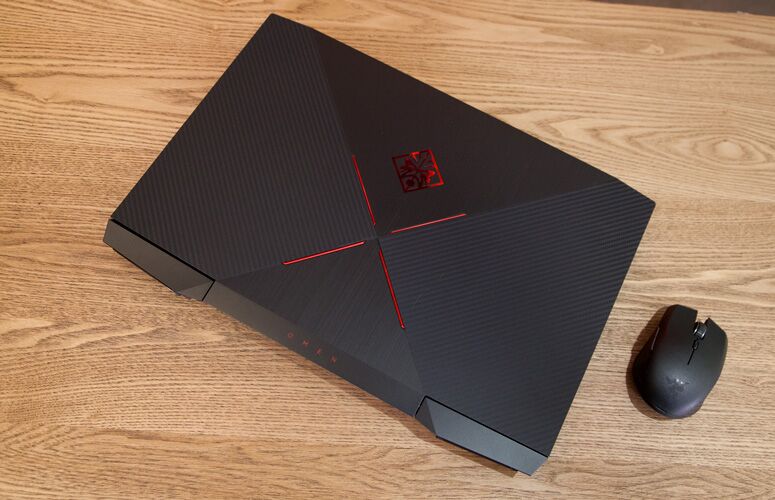
The cheapest option is $999.99 and has a Core i7 CPU, 8GB of RAM, a 1TB HDD and am AMD Radeon RX R550 GPU with 2GB of VRAM. For $1,300, you can get a Core i7 CPU, a GTX 1050 GPU with 2GB of VRAM, 16GB of RAM, a 1TB HDD and a 128GB SSD.
Bottom Line
HP's latest Omen 15 is one of the company's best gaming laptops yet, with a striking design and solid performance. I wish HP had gone all out on the materials and got rid of the plastic, but it's hard to argue with the Omen's beautiful display and loud speakers.
The GTX 1060 Max-Q can handle some VR, but if you want something a bit more souped-up, consider the Razer Blade, which has a full-size GTX 1060 and an all-aluminum chassis. Of course, you'll pay for that at a hefty $1,849.
If you want something cheaper, another option is the $1,099.99 Acer Predator, which also offers a GTX 1060 and easy upgradability, making it a bargain. However, the display is dimmer than I'd like.That positions the Omen 15 as a fine premium gaming laptop, and it's just good enough to overcome its few flaws.
Credit: Shaun Lucas/ Laptop Mag
HP Omen 15 (late 2017) Specs
| Bluetooth | Bluetooth 4.2 |
| Brand | HP |
| CPU | 2.8-GHz Intel Core i7-7700HQ CPU |
| Card Slots | SD memory reader |
| Company Website | hp.com |
| Display Size | 15.6 |
| Graphics Card | Nvidia GeForce GTX 1060 (Max-Q Design) / 6GB |
| Hard Drive Size | 256GB |
| Hard Drive Speed | n/a |
| Hard Drive Type | PCIe SSD |
| Highest Available Resolution | 3840 x 2160 |
| Native Resolution | 3840 x 2160 |
| Operating System | Windows 10 Home |
| Ports (excluding USB) | Line Out, Line-in, USB 3.0, Mini DisplayPort, Thunderbolt 3, SD card slot, Ethernet, HDMI, Kensington Lock |
| RAM | 16GB |
| Secondary Hard Drive Size | 1TB |
| Secondary Hard Drive Speed | 5400RPM |
| Size | 15.3 x 10.85 x 0.98 inches |
| Touchpad Size | 4.0 x 2.2 inches |
| USB Ports | 4 |
| Video Memory | 6 GB |
| Warranty/Support | 1 year warranty |
| Weight | 5.73 pounds |
| Wi-Fi | 802.11ac |
| Wi-Fi Model | Intel Dual Band Wireless-AC 7265 |
